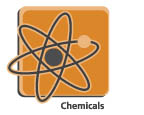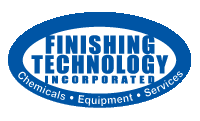|
Finishing Technology’s Anodizing Capabilities
Type 3 Anodizing: Hardcoat
 Hardcoat Anodizing is an electrochemical process that creates a controlled oxide film on the surface of aluminum. Hardcoat Anodizing utilizes sulfuric acid, low bath temperatures, and constant current rectification to achieve a very hard coating (60-70 Rockwell C). Hardcoat Anodizing is generally used for applications that need a corrosive, abrasive, and wear resistant coating. The appearance of the coating ranges from light to dark gray, depending on the alloy makeup of the aluminum substrate, and it can also be dyed black. Parts can be processed with multiple finishes. Hardcoat Anodizing is an electrochemical process that creates a controlled oxide film on the surface of aluminum. Hardcoat Anodizing utilizes sulfuric acid, low bath temperatures, and constant current rectification to achieve a very hard coating (60-70 Rockwell C). Hardcoat Anodizing is generally used for applications that need a corrosive, abrasive, and wear resistant coating. The appearance of the coating ranges from light to dark gray, depending on the alloy makeup of the aluminum substrate, and it can also be dyed black. Parts can be processed with multiple finishes.
Properties of Hardcoat Anodizing:
- Improved paint adhesion
- Compatible with adhesives
- Excellent lubricity
- Resistant to marine and atmospheric corrosion
- High operating temperatures
- Electrically resistant
- Galvanic neutrality (prevents galvanic corrosion from interaction between dissimilar metals)
Finishing Technology Hardcoat Anodizing capabilities:
- Typical Formed Thickness is 0.0001 to 0.0030 inches
- Available with PTFE (Teflon®)
- Bulk and Rack Processing
- Available Masking for Selective Surface Anodizing
- Salt Spray Corrosion Test (minimum 336 hours of salt spray resistance)
- Thickness Analysis
- Coating Weight Analysis
- Taber Abrasion Test
- Dielectric Testing
Most common Hardcoat Anodizing applications:
- Aerospace/Astrospace/Aviation: Wear resistance, dry lubrication, longevity and electrical insulation
- Firearms: Corrosion and wear resistance
- Machinery: Abrasion resistance for high-speed machine parts
- Electronics: Uniform emissivity and a high dielectric
- Marine/Naval: Corrosion resistance in salt-water environments
- Oil and Petrochemical: Corrosion protection and wear resistance.
- Ordnance: Corrosion protection, abrasion resistance and wear resistance
- Cookware: Corrosion protection and non-stick properties
- Molds and Dies: Improved release properties and abrasion resistance
- Sporting Goods: Improved durability and performance
Next: Finishing Technology’s Anodizing Capabilities Acid Etch
|



 Protect your product while making it easier to work with.
Protect your product while making it easier to work with.  Hardcoat Anodizing is an electrochemical process that creates a controlled oxide film on the surface of aluminum. Hardcoat Anodizing utilizes sulfuric acid, low bath temperatures, and constant current rectification to achieve a very hard coating (60-70 Rockwell C). Hardcoat Anodizing is generally used for applications that need a corrosive, abrasive, and wear resistant coating. The appearance of the coating ranges from light to dark gray, depending on the alloy makeup of the aluminum substrate, and it can also be dyed black. Parts can be processed with multiple finishes.
Hardcoat Anodizing is an electrochemical process that creates a controlled oxide film on the surface of aluminum. Hardcoat Anodizing utilizes sulfuric acid, low bath temperatures, and constant current rectification to achieve a very hard coating (60-70 Rockwell C). Hardcoat Anodizing is generally used for applications that need a corrosive, abrasive, and wear resistant coating. The appearance of the coating ranges from light to dark gray, depending on the alloy makeup of the aluminum substrate, and it can also be dyed black. Parts can be processed with multiple finishes.